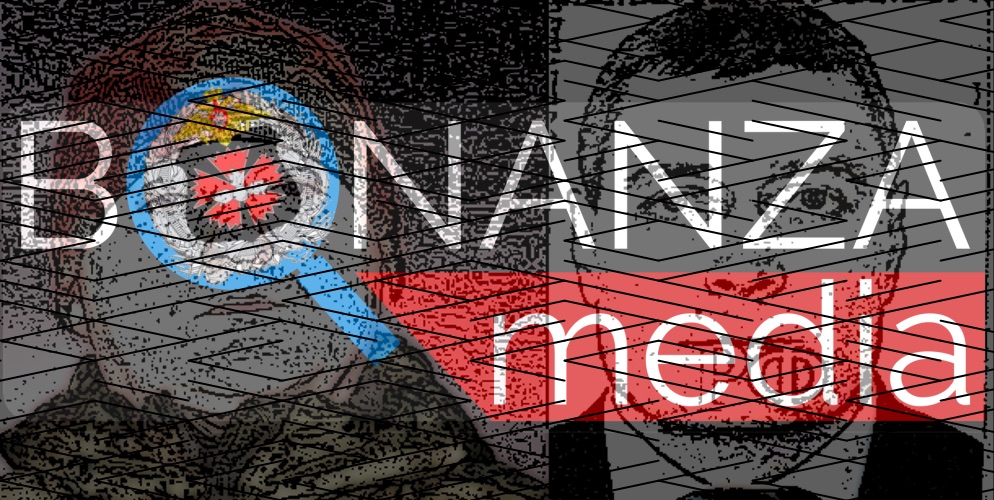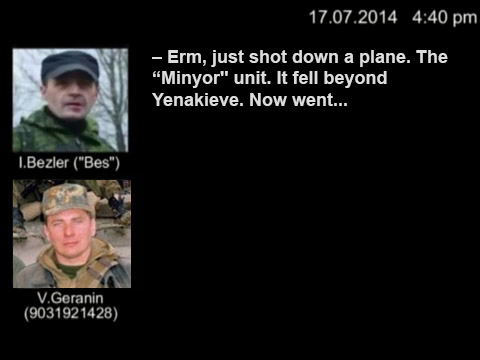Identifying Khmuryi, the Major General Linked to the Downing of MH17
This article was collaboratively researched and written by the Bellingcat MH17 Investigation Team.
On 18 July 2014, the Security Service of Ukraine (SBU) published several tapped telephone conversations in relation to the July 17 downing of Malaysian Airlines Flight 17 (MH17). Most of these conversations, recorded on the day of the downing, are between an officer identified as ‘Khmuryi’ (’Gloomy’ or ‘Grumpy’) and other separatist officers or soldiers of the self-proclaimed Donetsk People’s Republic. The SBU identified ‘Khmuryi’ as ‘Sergey Nikolaevich Petrovsky’, a Russian GRU officer, but it took some time before this was covered in-depth by either Western or Russian-language media.
On 1 April 2015, the Dutch news organizations NRC, NOS and De Telegraaf wrote on Khmuryi after the Joint Investigation Team (JIT) published a video that included the tapped phone conversations, but audible censoring of the identities of the parties in the call. However, on 18 September 2014, Russian-language media site PolitRussia published an article and a video about ‘Khmuryi’, a DNR officer named Sergey Petrovsky, presenting a photograph and a video interview. This publication is based on a video from 27 June 2014 showing an interview with a member of the so-called Donbas People’s Militia with the call sign ‘Khmuryi’. However, that video does not provide the full name of the commander. As this article will show, the man interviewed who reportedly fought in Slavyansk and is from Moscow is almost certainly not the same “Khmuryi” from the intercepted telephone conversation. Another video, titled ‘Sergey Nikolaevich Petrovsky (call sign Khmuryi, Bad soldier)’ and uploaded 2 October 2014, shows a video message of a masked man, who according to the video title is Sergey Petrovsky. However, the video was previously uploaded on 12 June 2014, entitled ‘Spetsnaz of Strelkov,’ and this man seems to be a different person than the bearded man in the 27 June 2014 video, as his voice differs.

Left: Screenshot of the 18 July 2014 SBU video, showing the name ‘Khmuryi’ and his full name ‘Sergey Nikolaevich Petrovsky’. Middle: publication of PolitRussia from 18 September 2014, showing a bearded man, supposed to be Sergey Petrovsky. Right: A masked man, visible in a 2 October 2014 video, titled “Sergey Nikolaevich Petrvosky (callsign ‘Khmuryi’, Bad Soldier)”. Below: Video from the JIT showing several conversations between Khmuryi and separatists.
On 30 November 2014, an interview with General Sergey Nikolaevich Petrovsky was published on the Russian news site Politikus, making clear that he was then the head of the Main Intelligence Directorate (GRU) of the Donetsk People’s Republic and that his military career started in the Soviet army in 1984, when he participated in the war in Afghanistan. In the 90s, he took part in wars in North Ossetia and Chechnya, where he met Igor ‘Strelkov’ Girkin, who was the Minister of Defence of the Donetsk People’s Republic in 2014. In another interview, published 25 December 2014 on ultranationalist Russian news site Zavtra, he describes himself as Major General Sergey Petrovsky, born in 1962 in the Donetsk region. It is unclear if he achieved the rank of major general in the Russian Federation or the self-proclaimed separatist republic. He also described having over 30 years of service in the Soviet and Russian armies. An earlier interview with ‘Khmuryi’, then a colonel, was published in 2003 on the Russian news site Izvestia, as mentioned in a 2016 publication on a blog named Globalized. This blog, but also another blog on 28 November 2014, describes that a person who calls himself ‘Plokhoy Soldat’ (‘Bad Soldier’), with an avatar saying ‘Khmuryi’, frequently posted on a forum of the website Antikvariat, a website about history, military relics, and other topics, and where Igor ‘Strelkov’ Girkin also regularly posted messages about the war in Ukraine. In this forum, he wrote on 19 July 2014 that he is Colonel Sergey Nikolaevich Petrovsky, Deputy Minister of Defence of the Donetsk People’s Republic for guards reconnaissance.
It is because of Igor Girkin’s e-mail account that was hacked in May 2014 that the true identity of Sergey Petrovsky, which is not his real name, came to light. Several e-mails from Girkin’s e-mail account were published, among them an e-mail sent on 28 April 2014 from Sergey Dubinsky with e-mail address karahan1962@mail.ru, writing “Igor, this is Zubr [European bison], hi, do you still remember me??” This name and e-mail address lead to a social media profile that makes clear that Dubinsky was born on 9 August 1962 and lived in Donetsk, Ukraine. It’s noteworthy to mention that this year of birth (1962) differs from SBU’s claim he was born in 1964. The e-mail address also leads to a forum on a website about the 181st Motorized Infantry Regiment, that belonged to the 108th Motorized Infantry Division, which was involved in the Afghan war from 1979 to 1989. In the forum, after a list of names of soldiers and the years they served, a guest introduces himself on 18 July 2010 as ‘Karakhan’ and Sergey Dubinsky, serving from 1985 to 1987, currently living in Donetsk, Ukraine. In 2011 he registered himself as user ‘Karakhan’, Sergey Dubinsky, born on 9 August 1962, and uploaded a photograph of himself in a military uniform, showing the rank of Colonel. One of his fellow veterans soon after uploaded several photographs of him as well, and in 2016 another fellow veteran uploaded a larger version of the photograph of Sergey Dubinsky in uniform and described him as ‘Petrovsky, Dvorkovskiy, Khmuryi, Zubr [European bison], Bison and our Karakhan’ and as ‘Khmuryi in DNR (Donetsk People’s Republic)’ in now-deleted posts on the forum. A video in the forum and a YouTube video show the same photograph of Sergey Dubinsky in a military uniform.
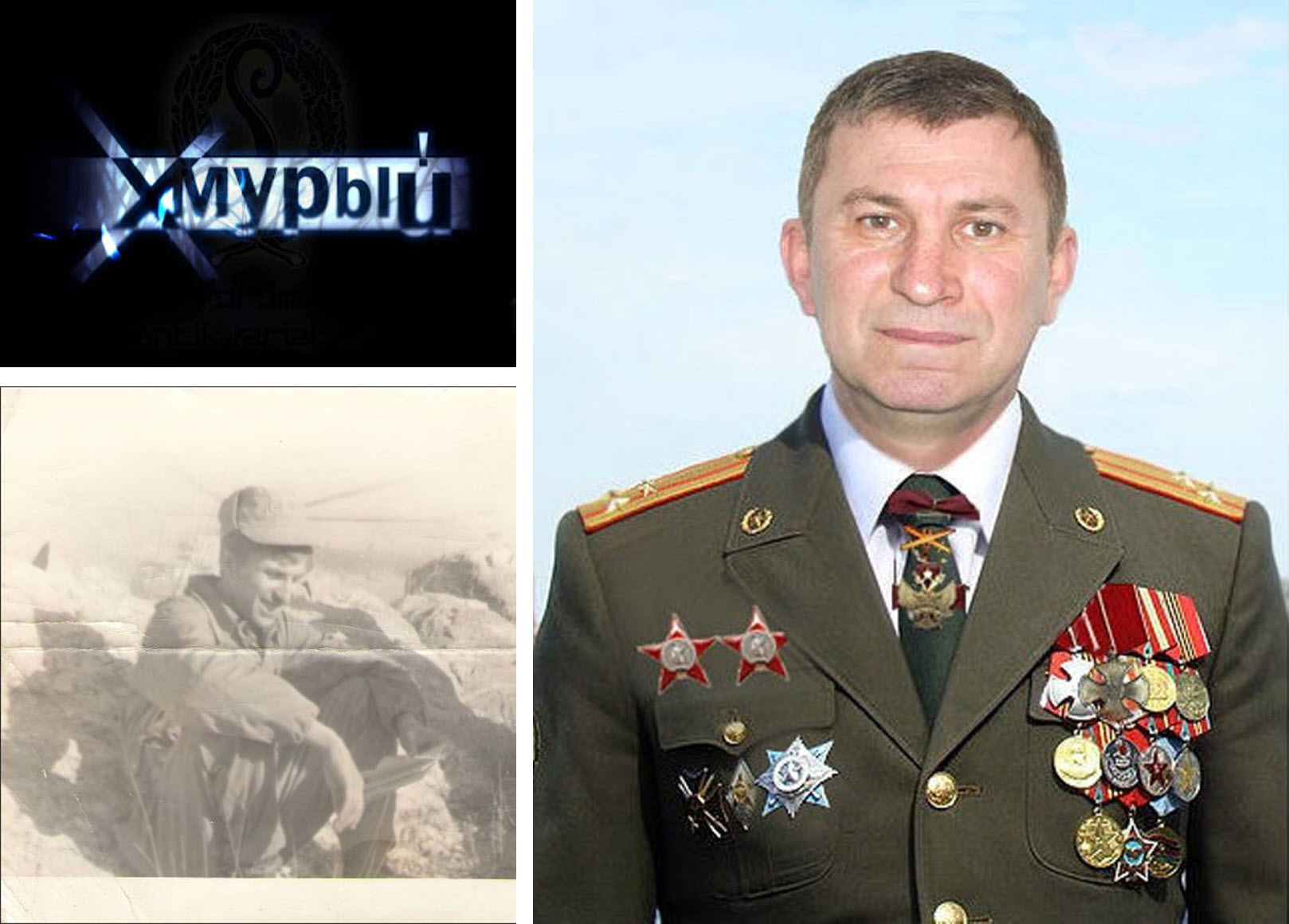
Top left: Khmuryi’s avatar on the Antikvariat forum; down left: photograph of Sergey Dubinsky in Afghanistan from his social media profile on ‘Moi Mir’ (My World); right: photograph of Sergey Dubinsky in a colonel uniform, uploaded in 2011.
The photograph of Sergey Dubinsky in uniform seems to have been edited (for example, a fragment of the medal ‘Order for Merit to the Fatherland’ on his tie seems to be missing), though the number of medals fit with a colonel and a military career since 1984. However, most of the medals on his uniform are from the Soviet era, such as the ‘Order of the Red Star’, ‘Order for Service to the Motherland in the Armed Forces of the USSR’, the medal ‘Veteran of the Armed Forces of the USSR’, all three medals ‘For Impeccable Service’ and a jubilee medal ’70 Years of the USSR Armed Forces’. The medals ‘Veteran of the Armed Forces of the USSR’ were only awarded to people who served in the Armed Forces of the Soviet Union for 25 years or more and the medals ‘For Impeccable Service’ were awarded to people who served 10, 15 and 20 years in the Armed Forces of the Soviet Union, so with a military career that started in 1984 it’s impossible for him to have these medals, as the Soviet Union ceased to exist in 1991. Two medals on the bottom right are medals for veterans of the Afghan war: the badge for ‘Soldiers-Internationalists’ and the medal ‘From the Grateful Afghan People’. Only the two medals ‘Order of Courage’ up left could have been awarded during his service in the Russian army. The medal up right seems to be the jubilee medal ‘50 Years of Victory in the Great Patriotic War of 1941-1945’, a medal that was awarded in 1993, according to another source, only to veterans of the 2nd World War and former underage prisoners of concentration camps. Since Dubinsky was born in 1962, he could not belong to these two categories.
Articles about the Donetsk People’s Republic published his photograph on 10 August 2015, 14 September 2015 and 12 November 2015, but only on 19 November 2016 the link to MH17 was made on a website about Donetsk. Data and photographs of Sergey Dubinsky were published on the website of ‘Mirotvorets’ (‘Peacemaker’), an organization that gathers personal information largely from open sources on Russians, separatists, and alleged collaborators related to the war in the Donbas. On 7 February 2017, an open source research collective InformNapalm published additional information about Sergey Dubinsky and the exact location of his current residence: ulitsa Molodozhnaya 4B, Bolshoy Log, Rostov Oblast in Russia.
Bellingcat found another social media profile of Sergey Nikolaevich Dubinsky, with information indicating that this user was born on 9 August 1962, and living in Donetsk, Ukraine, and in Rostov-on-Don, Russia. According to the photographs from this profile, Dubinsky and his family were living in Russia in 2010, but apparently lived in Ukraine in the summer of 2011. According to an openly accessible traffic police database of Rostov-on-Don, Sergey Nikolaevich Dubinsky, born on 9 August 1962, lived in Stepnoy in an undefined street house number 1, apartment 117, and had three different cars registered on his name between 1998 and 2004. Stepnoy in the Rostov Oblast is a military village, where the 22nd Spetsnaz Brigade (literally translated as the 22th Separate Brigade for Special Purposes), or military unit 11659 is located, a military unit that is part of the ‘GRU’, the Main Intelligence Directorate.
Photographs in his album prove that he was in Donetsk, Ukraine in the autumn and December of 2014. On the autumn 2014 photograph Dubinsky is visible next to Russian actor Mikhail Porechenkov, who visited Donetsk on 30 October 2014. In the December 2014 photograph, Russian actor Ivan Okhlobystin, who is banned from Ukraine because of his support to pro-Russian separatists, and his wife Oksana Arbuzova are visible. He visited the Donbas area in late November 2014 and Donetsk on 30 November 2014, where he seems to have met Igor ‘Strelkov’ Girkin and claims to have received a watch for Christmas from ‘Khmuryi’, General Major Sergey Nikolaevich Petrovsky.
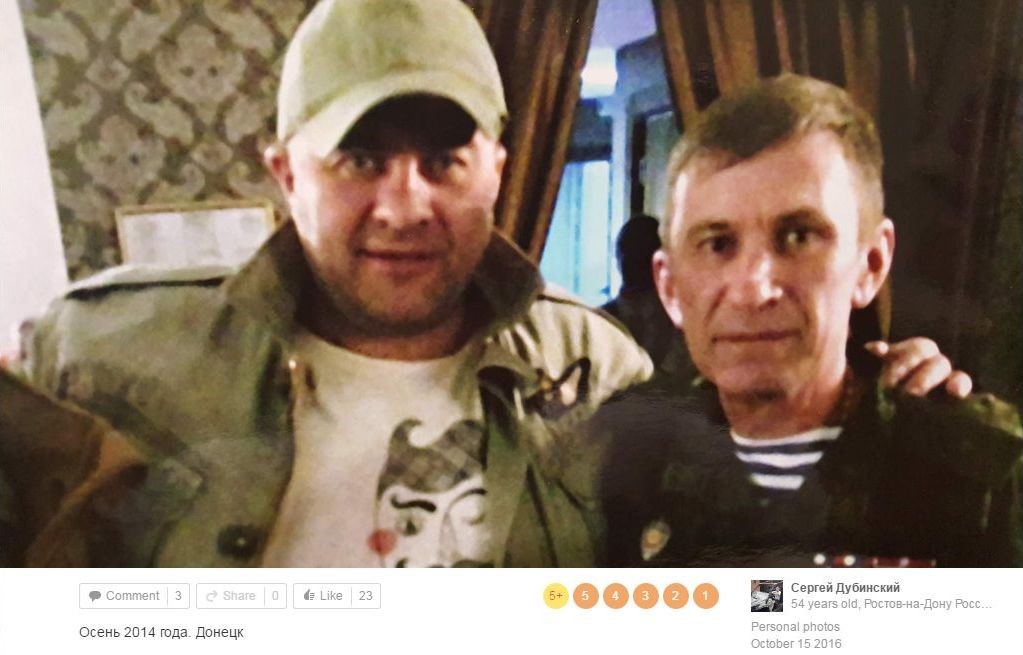
Sergey Dubinsky (right) with Mikhail Porechenkov (left) in Donetsk, Ukraine, autumn 2014, photograph uploaded 15 October 2016.
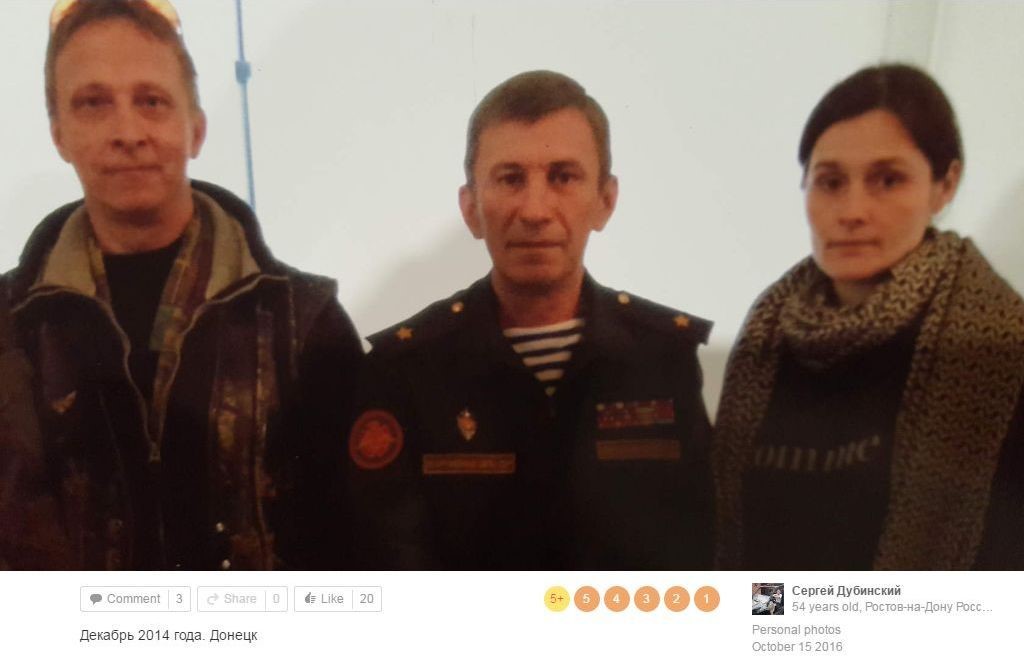
Sergey Dubinsky (middle) in Donetsk, Ukraine, in December 2014, photograph uploaded 15 October 2016. Left: Ivan Okhlobystin, Right: Ivan’s wife Oksana Arbuzova.
The December 2014 photograph shows Sergey Dubinsky in what appears to be a Russian military uniform with the rank major general, quite comparable to, for example, the 2015 uniform of Russia’s Defense Ministry Spokesperson Major General Igor Konashenkov. Dubinsky seems to wear a shoulder patch of either ‘Spetsnaz GRU’, the special forces of the Russian Main Intelligence Directorate, or the Russian Ground Forces, though he reportedly resigned from the Russian Armed Forces in April 2014.
It seems that Dubinsky left Donetsk in early 2015 and was even denied entry to the Donetsk People’s Republic because of extracting money from businessmen. A decree of the Russian Federation of 17 April 2015 (which has been archived) sought to revoke money from Sergey Dubinsky, and described how he received a pension for his service in several military units. The first unit named is military unit 61019, a unit that was very likely disbanded quite some time ago, as no information is available on it online. The second unit mentioned is the aforementioned military unit 11659, or the 22nd Spetsnaz Brigade, and the third unit mentioned is military unit 51019, or the 116th Separate Special Purpose Radio Unit, located in Stepnoy.
Photographs uploaded in the summer of 2016 show Dubinsky’s new house, which was geolocated to the same location of the InformNapalm article: ulitsa Molodozhnaya in Bolshoy Log, Rostov Oblast in Russia. Only the house number is not clear, as Google and Yandex maps do not specify house numbers for all the houses in that street, but likely the house number is 4a, rather than 4b. The view in the photograph corresponds to the view behind the house on Google Streetview. Another photograph shows Dubinsky in a Canadian-produced vehicle, a Can-Am Commander XT, worth almost $15,000 when purchased new.
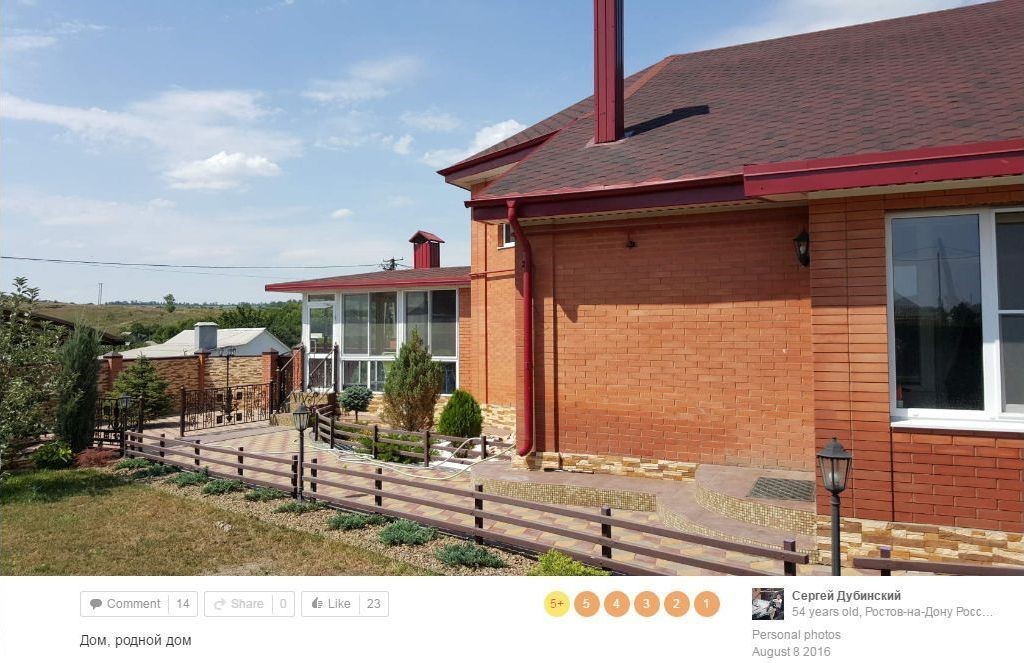
The new house of Sergey Dubinsky, where he (and his family) very likely live since 2015, photograph uploaded 8 August 2016.

Sergey Dubinsky sitting in a Can-Am Commander XT, likely in front of his house, photograph uploaded 4 August 2016.
Bellingcat’s conclusion is that the man whose telephone was tapped by the Ukrainian Security Service on 17 July 2014, assuming the SBU correctly identified his voice and/or knew that the intercepted telephone number belonged to him and was thus involved in the transport of the Buk missile launcher that downed MH17 on the same date, is named Sergey Nikolaevich Dubinsky, nicknamed ‘Khmuryi’. Dubinsky is a Russian war veteran and was a colonel in July 2014, fought in the Soviet-Afghan war and later in Chechnya, and later served in the 22nd Spetsnaz Brigade, a unit connected to the ‘GRU’, the Main Intelligence Directorate. This man does not appear to be the same person as the bearded man, who likely coincidentally also used the call sign ‘Khmuryi’ in a June 2014 interview; Dubinsky wrote in the Antikvariat forum on 2 July 2014 that he had been confused with someone else “from Slavyansk.” However, Dubinsky may be the same person as the masked man in an October 2014 video titled ‘Sergey Nikolaevich Petrovsky (call sign Khmuryi, Bad Soldier)’, previously uploaded on 12 June 2014 as ‘Spetsnaz of Strelkov’. Dubinsky wrote in the same post of 2 July 2014 on the Antikvariat forum that he is not a man seen in the media, with one exception, just as he read in the text of the 12 June 2014 video.
Sergey Dubinsky was granted the higher rank of major general in the Donetsk People’s Republic in, apparently, August 2014, shortly after the downing of MH17, and later relocated to the Russian Federation after being expelled from Donetsk for alleged financial crimes. Nowadays Dubinsky lives a fairly luxurious life for Russian standards, in a quiet village, spending time with his family and enjoying rides in an expensive recreational vehicle.
